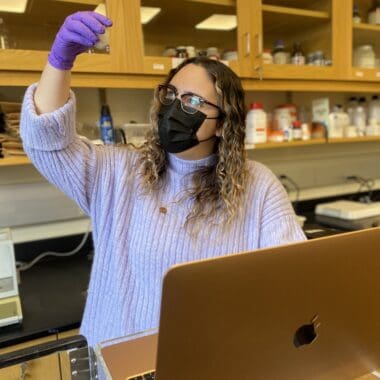
Salt marshes are blue carbon ecosystems that accumulate and store high amounts of carbon below ground. Carbon can be accumulated from suspended sediment (allochthonous) and within the salt marsh through fixed carbon dioxide via photosynthesis by marsh vegetation (autochthonous). The carbon is beneficial for arbuscular mycorrhizal fungi (AMF). The AMF receive fixed carbon from their host plant, and in return, provide the plant with mineral nutrients and an increased surface area, which leads to greater below ground carbon storage.
Project objectives are:
1. Evaluate if rhizosphere carbon (C) varies across a chronosequence of salt marshes within dominant Sporobolus (Spartina) species (S. alterniflorus, S. pumilus, and S. michauxianus). Sporobolus species are the common salt marsh grasses.
2. Address if there are correlations between rhizosphere carbon, nitrogen, phosphorus, salinity and arbuscular mycorrhizal fungi (AMF).
3. Determine how AMF are contributing to carbon storage.
Kendra Sampson is a PhD student co-supervised by Dr. Danika van Proosdij of Saint Mary’s University and Acadia’s Dr. Allison Walker. This project is part of the NSERC RESNET landscape 1: Bay of Fundy.
For more information on this project click to view the poster >>


 Acadia University
Acadia University